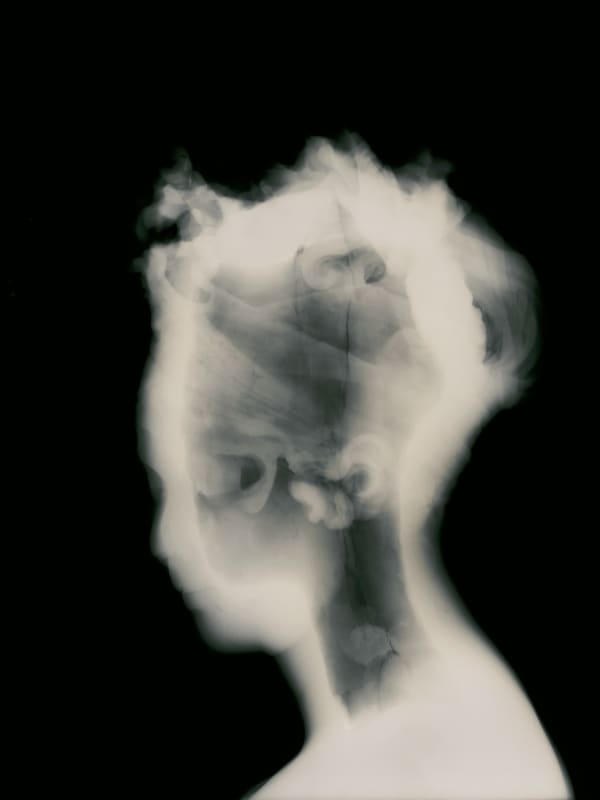Inspired by the artist Robert Smithson's writings, Terminal Mirage examines the periphery of Utah’s Great Salt Lake, including the mineral evaporation ponds and industrial pollution covering some 40,000 acres along its shores. Maisel's photographs evidence the devastation of the region, the landscape becoming more complex with each layer of human intervention. Yet, the function, location, scale, and condition of these sites are intentionally obscured; no title names the Great Salt Lake or its environs. As Maisel intends, we are first engaged by the surreal and apocalyptic beauty of these images, all sharing exquisite abstract colorations and design. Then myriad questions arise: Who or what created what we see in these views? The answers are neither easily explained nor universally confirmed, and less interesting to Maisel than the questions and discussions the pictures might evoke.
-
In his carefully constructed, reality-based photographs, artist David Maisel stages careful investigations that use unexpected perspectives to make the invisible visible — in landscapes transformed by industrialization or urbanization, or in our artifacts and memories of the past. Central throughout his works are themes of memory, excavation and transformation, of how we perceive our place on Earth or in time, and what we leave behind as a society.
-
“David Maisel’s photographs derive their effectiveness through formal choices involving color, scale, perspective, and abstraction, which amplify their seductive nature and conjure the elusive sublime.”
Natasha Egan, Executive Director, Museum of Contemporary Photography at Columbia College Chicago, IL
-

David Maisel
The Mining Project (Clifton, AZ 7), 1989
48 x 48 inches, edition of 5 + 2 AP: $26,000
29 x 29 inches, edition of 10 + 2 AP: $14,000
-
-
Desolation Desert (2018), created with the support of a Guggenheim Foundation Fellowship, focuses on the massive copper and lithium mining operations in the vast territory of Chile’s Atacama Desert. Maisel’s images of the American West and the Atacama counter a collective misapprehension of the desert as a terra incognita, a vast emptiness upon which we impose a notion of purity.
-
-
“My photographs are intended to give visual form to the disquieting relationship between contemporary humanity and the Earth, between consumer and consumed.”
-

David Maisel
The Lake Project 24, 2002
48 x 48 inches, edition of 5 + 2 AP: $24,000
29 x 29 inches, edition of 10 + 2 AP: $12,000
-
-
-
With Library of Dust (2005-2006), Maisel continues to investigate the overlapping realms of ethics and aesthetics, with the secret or hidden being made visible, moving into new territory concerned with metaphysical and immeasurable loss. The series comprises photographs of copper canisters stored at an Oregon state psychiatric hospital, each containing the cremated remains of a patient, unclaimed by their families. With their intensely hued mineral blooms, each image is an empathic portrait of someone otherwise forgotten by time.
-
-
“Matter lives on even when the body vanishes, even when it has been destroyed. Does some form of spirit live on as well?”
-

David Maisel
History's Shadow GM8, 2010
64 x 48 inches: $26,000
40 x 30 inches: $15,000
Combined edition of 7 + 2 AP
-
-
In Shadow Painting (2017), Maisel returned to the idea of examining x-rays, and found in paintings a new formal vocabulary with which to work. “The final images feel made of layers of history and time,” Maisel explains, “and give form to the ways in which painting and photography are inextricably intertwined.”
-

David Maisel
Mount Greylock 4, 1972, 2020
23 x 32 inches
$4,000 unframed
-
“They brought me back in time to places, settings, landscapes that were unearthed by the momentary stillness of the world: the garden at my grandmother’s home, underneath a tree in my childhood backyard.”
-

-
-

Photo: Lynn Fontana



































